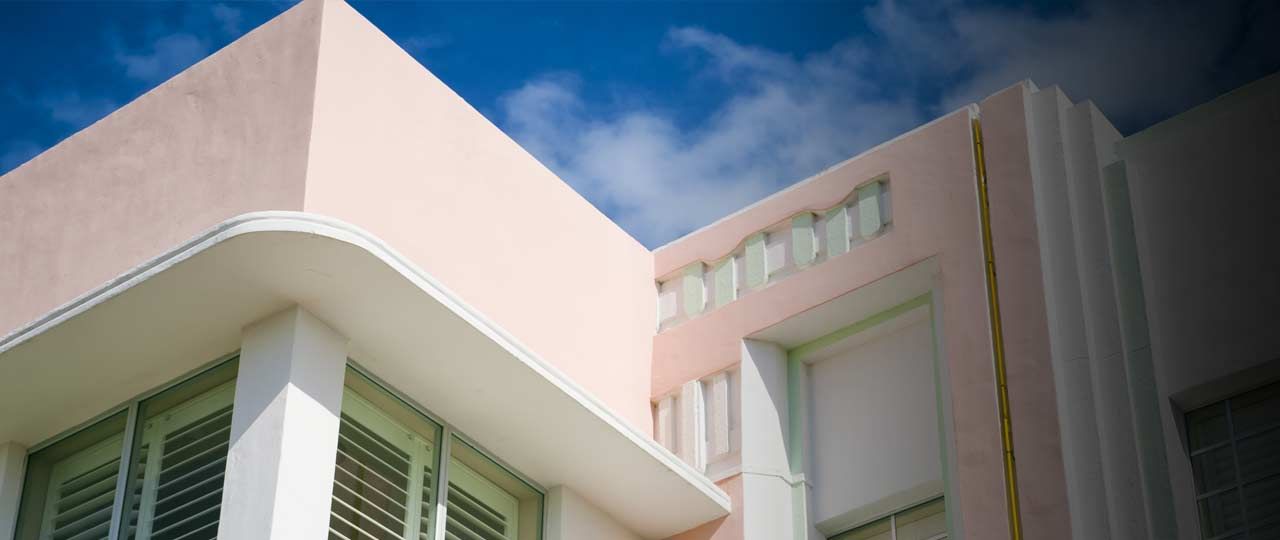
Edward Church
Senior Director, Estate Agency


Senior Director, Estate Agency
Dating from the first half of the twentieth century, Art Deco houses exemplify the zeal and sophistication of the roaring twenties.
What makes Art Deco property so popular?
The Art Deco movement originated in Paris in the mid-1920s and became one of the first global art styles, expanding throughout Europe and the United States through the 1930s.
But, tragically, Art Deco was short-lived. Apart from a brief resurgence in the 1960s, its influence was stunted by the Second World War and the subsequent rise of Bauhaus-inspired Modernism.
British Art Deco therefore experienced a fleeting lifespan, best exemplified today in masterpieces such as the Hoover Building, Battersea Power Station and the Midland Hotel, Morecambe.
Some of the grandest British Art Deco buildings have recently been converted into luxury apartments, re-introducing this iconic style to the contemporary housing market.
But, while the 1930s was a boom time for British house-building, relatively few private homes were designed to the Art Deco style. Thus, original Art Deco houses are now hard to come by, meaning those in good condition are considered collectors’ items and get quickly snapped up when they come onto the market.
Where will you find Art Deco property?
Unlike many period properties, which are concentrated in certain areas of towns or cities, Art Deco houses and apartment blocks are scattered across the country. You won’t find many Art Deco estates – in fact, much of the intrigue of Art Deco is that it is often found in the most unusual places.
London has several notable apartment blocks dating from this era, including Du Cane Court in Balham, Greybrook House in Mayfair and Florin Court, which was used as the fictional London residence of Hercule Poirot in the popular television series, Agatha Christie’s Poirot.
Art Deco properties are not uncommon in other city centres such as Manchester and Leeds, and in seaside towns such as Brighton and Hastings. But you’re equally as likely to find them on the outskirts and in the countryside too – some of the most attractive Art Deco houses are located on their own grounds, such as Charters in Ascot.
What you need to know before buying an Art Deco house
Many Art Deco properties have been upgraded to modern standards – great if you are looking for a home to settle into right away. Meanwhile, those that haven’t been upgraded tend to be crying out for renovation and offer the ideal opportunity to investors.
If you’re looking to buy an Art Deco apartment or house, make sure you do your research first. Here are a few things to consider:
Common problems with Art Deco homes
All old properties can have problems, but there are some issues specific to Art Deco construction that it’s worth being aware of before you buy an Art Deco property.
How to improve the energy rating of your Art Deco property
Original Art Deco homes tend to have very low energy efficiency, as they were typically built without insulation. Most heat is lost through the walls, so check if cavity wall insulation could be appropriate for your property.
Insulating the roof will also help to deliver significant energy savings, though be aware that roof insulation for flat roofs is not a DIY job – you’ll need to get professional advice.
If your home still has original Crittal metal-framed windows, these can be replaced with modern steel or aluminium double-glazed windows and still retain the single-glazed look. If you would prefer to restore the original windows, fitting secondary glazing is another option.
Read more on how to make your period property more eco-friendly or see our favourite Art Deco properties for sale.